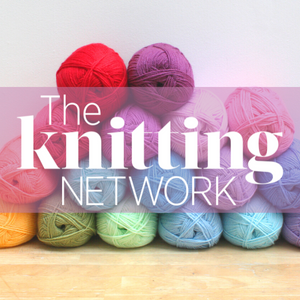Sign Up
Already have an account? Sign in here
Sign In
Dont have an account? Sign up here
Talking Tension
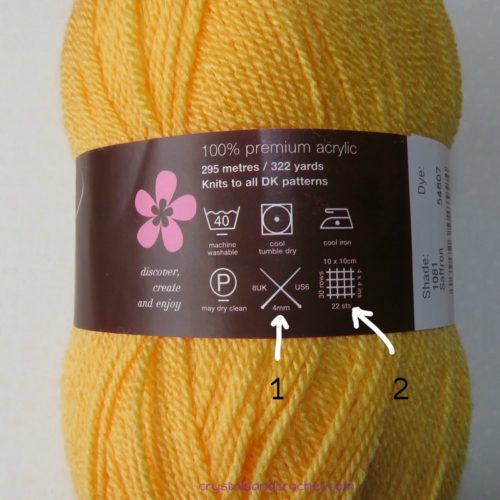
Let’s talk about tension…..
If you are happy with your technique, and the finished result of your work, then look no further, keep doing what you are doing, and enjoy your craft.
However, if, like me, you are constantly trying to improve your skills, then take a seat, relax, and let me see if I can help.
♥ Tension is a huge issue for many people when they first start to knit or crochet.
But what is tension?
♥ Tension is the stress, force, or pressure we apply to our yarn as we are working with it.
Question: What is the correct tension to work with?
Answer: The one that gets you the results you like.
Now that may sound a little ambiguous, but, there is actually no right or wrong, although there are guidelines, and that is what I am going to ramble on about for a while.
♥ You will find lots of details and photos in this article, and there is also a video tutorial if you find that easier.


Manufacturers guidelines.
Every ball or skein of yarn you buy has a recommended tension on the ball band.
For this example, I am using Stylecraft Special Double Knitting yarn.
1. As you see, the recommendation is to use 4mm knitting needles, you would also use a 4mm crochet hook. The tension guides are always for knitting!!
2. Here the guide is 22 stitches x 30 rows to give you a 4 inch/10cm square.
Let’s look at how we achieve that, after I first tell you how I learned to knit and crochet.
I am an English girl, and was taught by my Nanna, who was taught by her Mother etc, this was a skill passed on through many generations, with no technical qualifications, just the traditional ways of crafting.
There are many different techniques, none of them are wrong, a little like Chinese Whispers, we all add our own little twist to what we do, and how we pass that information on down the line.
So, back to my knitting…
yes, I am bi-stitchual!
You will see this best in the video, but as I work, with one needle in each hand, I use the fingers of my right hand to hold the yarn.
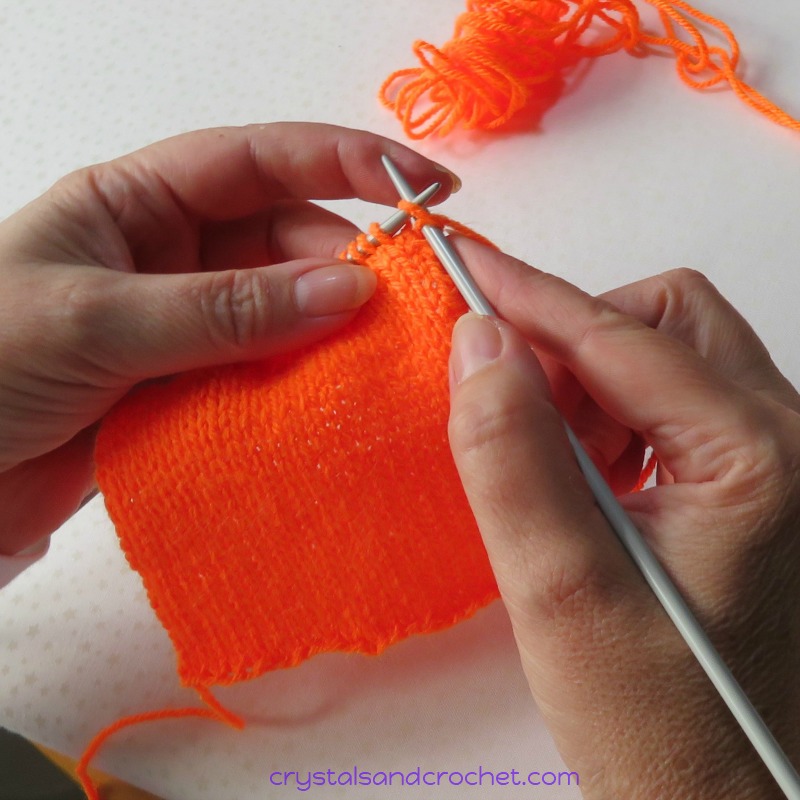

When I am crocheting I hold the yarn in my left hand (I am right handed).
I pick the yarn up with my little finger, flip my hand, and pass the yarn under my two middle fingers and over my 1st finger.
I then gently hold my 1st and 2nd fingers together to keep the yarn under control [1], I apply very little pressure, so that the yarn can run freely through my fingers.
The yarn runs over my 1st finger giving me a working space to pick up my yarn [2].

♥ What happens if you apply too much pressure, or wrap the yarn tightly around your fingers?
This is where you can apply too much tension, holding the yarn too tightly will mean you are over stretching the yarn and your stitches will tend to be too small, and tight.
Back to my knitting for a moment, let’s look at what happens to the needles as I work.
They are constantly touching, this is where you get the clickety clack noise when someone knits quickly.
The constant touching of the needles, and the smooth flow of yarn is what gives me even stitches and tension.
With the recommended 22 stitches and 30 rows I achieve a 4 inch square.
Again, do watch the video as it is so much easier to show, rather than tell.
(it is at the bottom of this post)


Now let’s apply the same principals to crochet.
♥ But…… because we only have 1 hook, the hook needs to remain in contact with the top of the stitches of the previous row or round to give us the same even tension.
♥ If you yank down with your hook, you will shorten your stitches.
♥ If you lift away from the previous row/round you will lengthen your stitches.
If I make 22 single crochet stitches, applying the same tension principals, I achieve 5 inches, so to make it square I need to make 26 rows.
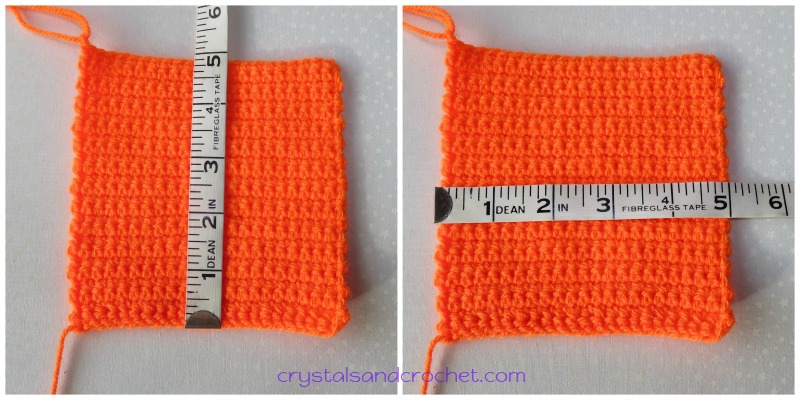

♥ When you first start, or when you are learning new stitches, speed is the last thing you need to think or worry about!
♥ Take your time, be mindful of your technique, and you will become more relaxed and your stitches will all magically become beautifully even.
Here are four squares, all the same tension, but increasing the stitch size.
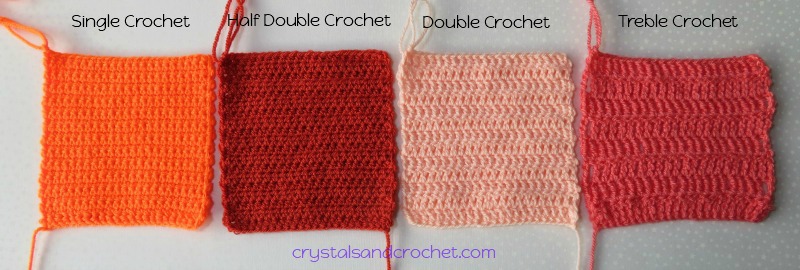
All of the squares are 22 stitches wide, as all stitches should be the same width.
There are 26 rows of Single Crochet – 19 rows of Half Double Crochet – 13 rows of Double Crochet – 8 rows of Treble Crochet.
One of the ways I think of stitch height when I am designing is this:
Single crochet = 1 unit of height
Double crochet = 2 units of height
Treble crochet = 3 units of height
A half double crochet is inbetween a single and double.
♥ This is also a handy way to think of your stitches if you are making a border along the edge of stitches worked in rows – 1 for sc or hdc – 2 for dc – 3 for tr.
♥ Remember even though you will chain 3 for a Double Crochet, only 2 of the chains count as the post of the stitch, the 3rd chain counts as the top 2 loops.

Adjusting your tension.
♥ You can adjust your tension, by adjusting your technique, OR you can also adjust by changing your hook size.
♥ With Double knitting yarn we are recommended to use a 4mm crochet hook.
These squares are 3 rounds of Double Crochet (US terms).
The one made with a 4mm hook measures 3 inches or 7.5cm square.
For comparison I have also made squares using a 3mm, 3.5mm, 4.5mm and 5mm hooks, each 1/2 hook size changes the final measurement by 1/4 of an inch.
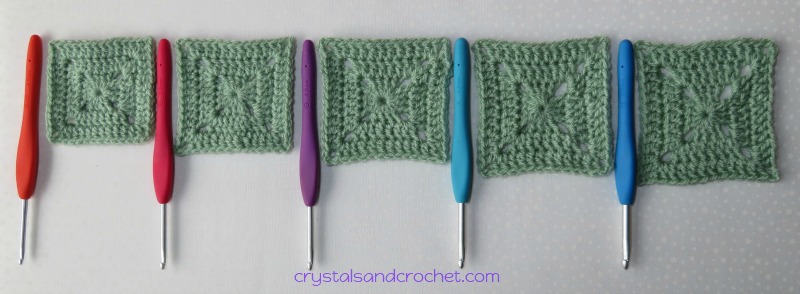
You can easily see the way the size differs with the different hook sizes.
Please watch the video for lots more information and tips on keeping even tension as you work.

♥ All of my tutorials are free and are written or recorded using US terminology.
♥ If you need help and advice, the quickest way to find support is to join Helen’s Hookaholics Facebook group. There you will find a very supportive group of likeminded people. It’s also a great place to share your crystalsandcrochet makes, and see what others are making, and see what I am up to.
♥ If you are not a fan of Facebook you can always email me with any questions you may have by using the contact form here.




